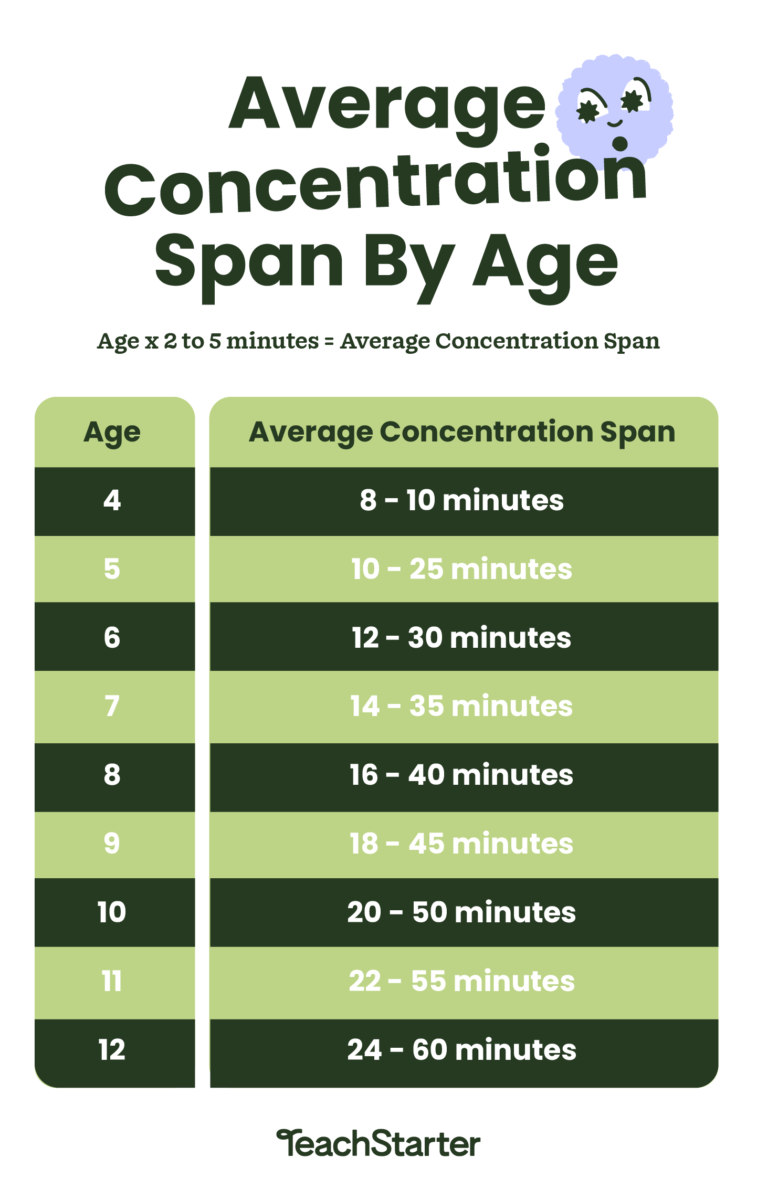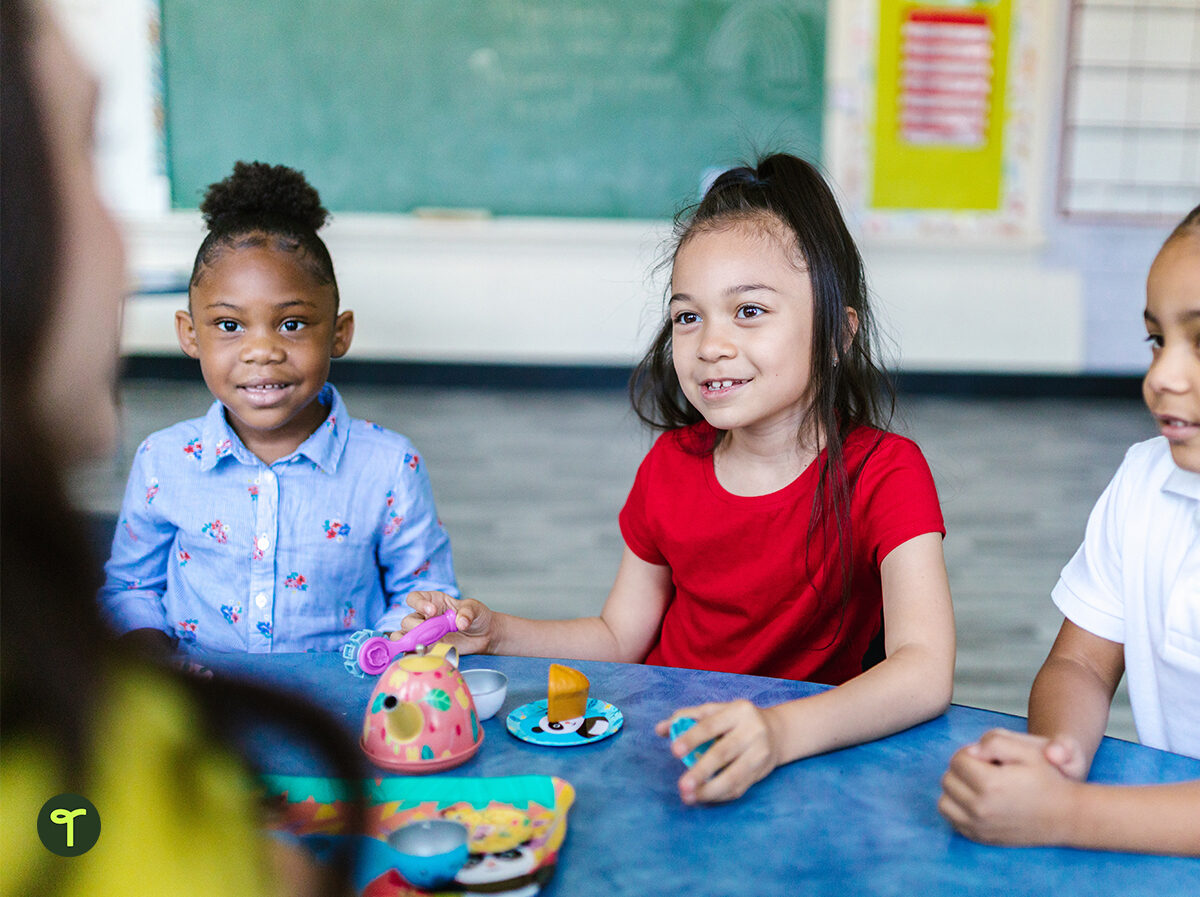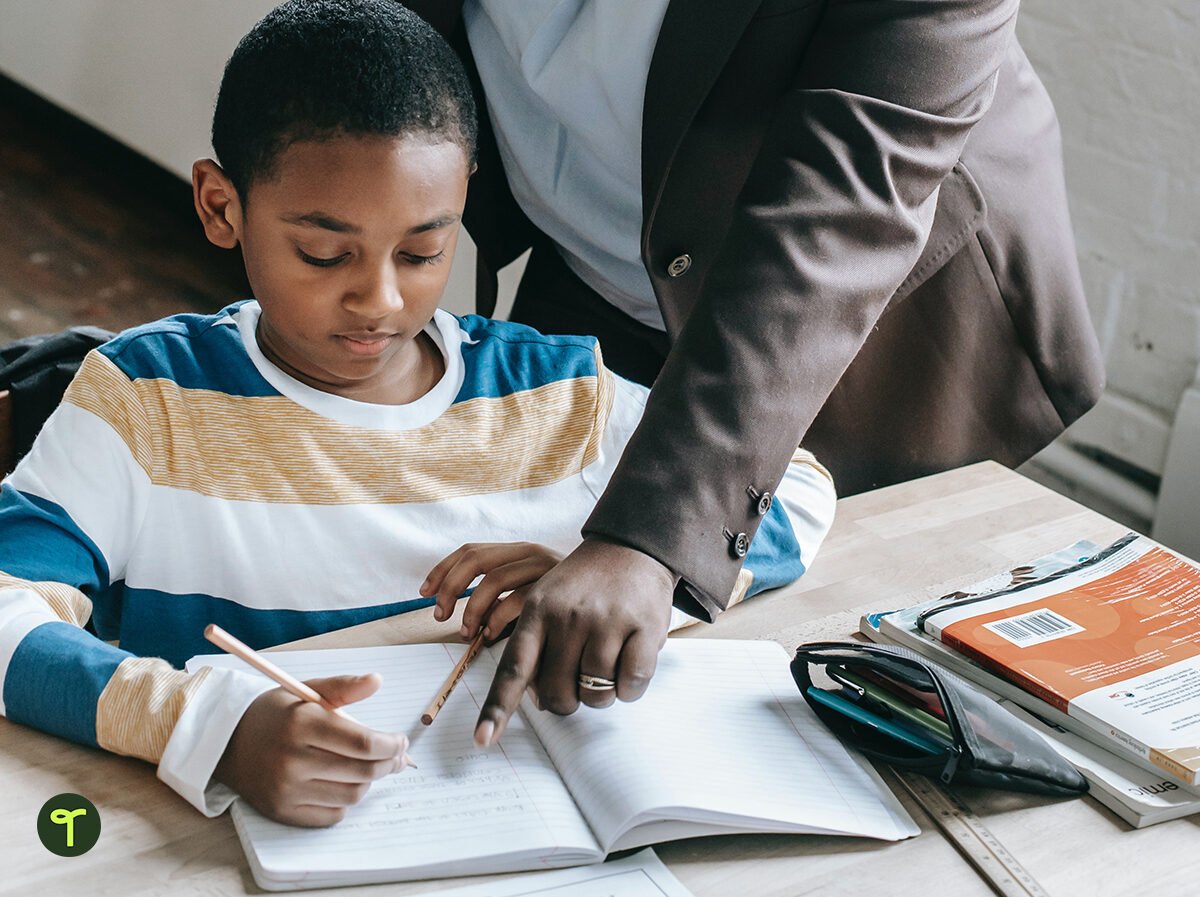If you’ve ever felt like your students have the attention span of a goldfish, you’re not alone. Teachers have long struggled to get some students to concentrate and focus in the classroom, and there is a growing amount of research that shows kids just don’t have the ability to concentrate the way adults do.
That’s not necessarily a bad thing, either. In one study of kids and grown-ups conducted at the Ohio State University to better understand focus and recall, researchers found that kids couldn’t concentrate the way adults could, but the kids managed to remember more than the grown-ups — even though their minds wandered.
So should you just give up on improving student concentration in your classroom? Nope! We’ve pulled together the research on what really does work when it comes to getting students to focus, plus strategies for focusing in the classroom.
How Long is a Student’s Attention Span?
Exactly how long a student can focus is — unsurprisingly — relatively individual. One thing the neuroscientists do tell us is that the average attention span will get longer as kids get older.
Many experts will tell you that the average length of a child’s attention can be calculated by this simple formula:
Age × 2-5 minutes = Average Attention Span

Of course, this is a generalization, and there’s evidence that the increasing amount of media out there is making it harder for kids to train their brains on one particular thing. A study by the Kaiser Family Foundation, for example, found that fully half of kids 8 to 18 are simultaneously watching a TV show or surfing the web while doing their homework — and that data is from all the way back in 2010, before TikTok or dozens of today’s streaming services even existed.
There’s also the fact that ADHD diagnoses continue to grow in the United States, although they’ve begun to level out in recent years. It’s now estimated that 9.4 percent of American kids have been diagnosed with the attention-related disorder, and many of those kids have other disorders that can affect their ability to concentrate in the classroom, from anxiety to depression to autism.
Of course, then there’s the simple fact that sometimes kids — just like us — can have bad days when they just can’t seem to pay attention.
Why Is Student Concentration Important?
This may seem rather obvious. You want your students to be paying attention in class so that they can soak up all that good information you’re sprinkling on them. But the issues of kids who don’t concentrate in your class can go much further. One study out of Canada found a correlation between kids who weren’t able to pay attention and lower earnings when they hit adulthood. Published in the medical journal JAMA Psychiatry, the study found that a single one standard deviation reduction in inattention scores at the age of 6 would restore a $3,077 in annual earnings for adult men, $1,915 for adult women.
A few moments — or even a day or two — when kids aren’t paying attention in class is one thing, but when inattention is chronic, it can have long-lasting repercussions. With that in mind, here are some ways to help your young learners learn to focus and stay on task.
How to Improve Student Concentration
After you figure out the average attention span of the age group that you teach, think about how you can best deliver lesson content and sequence activities to ensure maximum concentration. These strategies can help improve concentration in the classroom.
Take Advantage of Centers
Learning centers aren’t just a great way to give kids time to work hands-on with manipulatives or provide more in-depth exposure to the curriculum. There’s solid research that this kind of small group work is beneficial to helping students concentrate in the classroom. Researchers at Carnegie Mellon and the Teachers College of Columbia published a peer-reviewed study in 2016, for example, that showed that students went off task more frequently during whole-group instruction than during small group or individual work. This was true across the board, with the same behaviors seen in kindergarten and fourth grade, in public and private schools.

Keep Your Lessons Short
The same Carnegie Mellon and Teachers College of Columbia study found that 25 percent of instructional lessons were 17 minutes or longer — but kids’ minds started to wander by about the 10-minute mark. When you’re planning a lesson, break it down into smaller chunks to improve student concentration. That doesn’t mean you stop teaching about the topic, necessarily. You may switch gears from a group activity to partner work or from an individual task to sharing the work they’ve completed with a small group.
Make Brain Breaks Routine
In line with keeping lessons short, brain breaks should be incorporated throughout the school day to let kids shake the cobwebs out and get their concentration powers back. The general rule of thumb is to provide around three to five minutes of “break” time to give the mind time to reset.
Get new brain break ideas and activities, designed by teachers for teachers like you.
Fast-Finisher Activities
There’s nothing inclined to distract students faster than a classmate who has finished their work and is bored with a capital B. Make sure you have plenty of fast-finisher activities that they can begin after completing individual work, so there’s never a moment to interrupt a classmate’s focus.
Don’t Hold Back Recess
Taking away recess is now illegal in many states, but if it’s still the norm where you teach, it could be working against you when it comes to student concentration. It turns out physical activity is a key factor in improving everything from memory to — you guessed it — concentration!
Indoor recess canceled because of inclement weather? These games can be played indoors!
Use Active Games
While we’re on the topic of physical activity, incorporating it into the classroom can be invaluable in helping students focus. Use active games as a whole class to practice and review content to take advantage of its benefits and inject extra fun into the learning process.
See some of our favorite active games for kids, designed by teachers for success in the classroom!
Ask Students to Rate Tasks
If you already use exit tickets in the classroom to find out what students’ gleaned from a lesson, you know that student feedback is invaluable in helping you make your lessons more effective. That can also apply to how well they keep kids engaged. Don’t be afraid to ask your students about how interesting they found the task or if they were daydreaming a little (or a lot).
Tone Down Your Decor
Karrie Godwin, a professor at Kent State University, who worked on the 2016 study, is also known in educational circles for her research into how classroom decor can affect students’ ability to focus. As much as we all love our pretty decor, the fact is heavily decorated classrooms can hinder learning.
Find out how to create a calming classroom and decorate with intent!
Let Them Chew Gum
We know. We know. We know! Just saying the word may bring the wrath of the entire janitorial staff down upon you, but we will just leave this bit of research dangling out there: Chewing gum has been shown to help you stay focused longer, especially when doing tasks that require visual memory.
We know some teachers opt to just allow gum on test days as a special treat — and to help students concentrate.
Allow Kids to Use Fidget Toys
Although they’ve been banned in many a classroom unless specifically written into an IEP, there’s growing evidence that push bubble toys, spinners, clickers, and the rest of the options out there can have a real benefit when it comes to keeping kids on task.
Create a Daily Mindfulness Practice Routine
Focus doesn’t come naturally to most of us — it has to be practiced. The benefits of using mindfulness in the classroom are varied, including the ability to practice concentrating. There are a host of short, easy mindfulness activities for kids that can be incorporated into your daily routine.
Plan to run a 5-10 minute mindfulness practice at a time that you know students need a little extra something to help focus and get the most out of the learning experience that is about to occur.
Keep Your Own Eye on the Time!
Once you begin to increase your awareness of the variety of individual student attention spans in your class, keep an eye on the time that has elapsed since the beginning of an activity.
Ask students who you know struggle with attention to show their work after a certain amount of time. This simple act of entering the world of the student requires them to shift gears from whatever they were doing to communicating with you. It can be an effective way to keep easily-distracted students focused on a task and has the added benefit of giving them the opportunity to ask for help or clarification if needed.

Set Up Flexible Seating
Flexible seating is another proactive approach to improving student outcomes. It is a way of setting up your classroom by ditching the traditional notion of “rows of desks facing the teacher at the front”. Instead, aim to provide students with a variety of seating options so they can choose the one that is most comfortable for them.
Play Memory Games
Make memory or other concentration games available to students for them to play at appropriate times. The simple act of focusing for a length of time, while in the mental ‘play space’ of a game, is a valuable practice of concentration skills.
Familiar card games like Go Fish, Snap, and Memory or commercial games like Guess Who, Uno, Battleship, and Jenga are all examples of games to help practice the skill of concentration.
You can also explore our collection of educational games, bingo cards, and active games.
There are really so many ways to cater to the varying concentration spans of your class, but the most valuable may just be facilitating hands-on, practical, or inquiry-based learning experiences that require creative thinking and problem-solving.







Comments